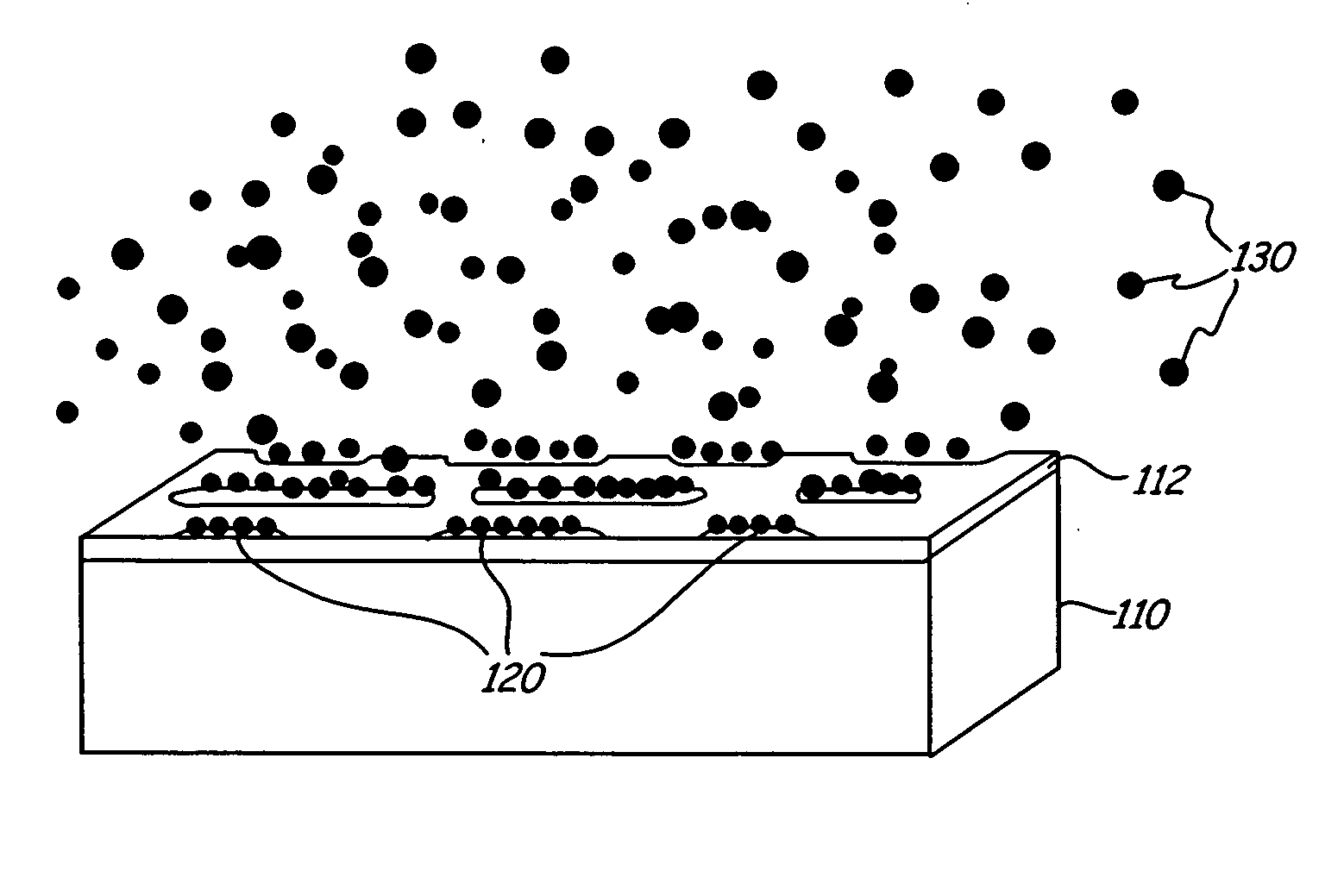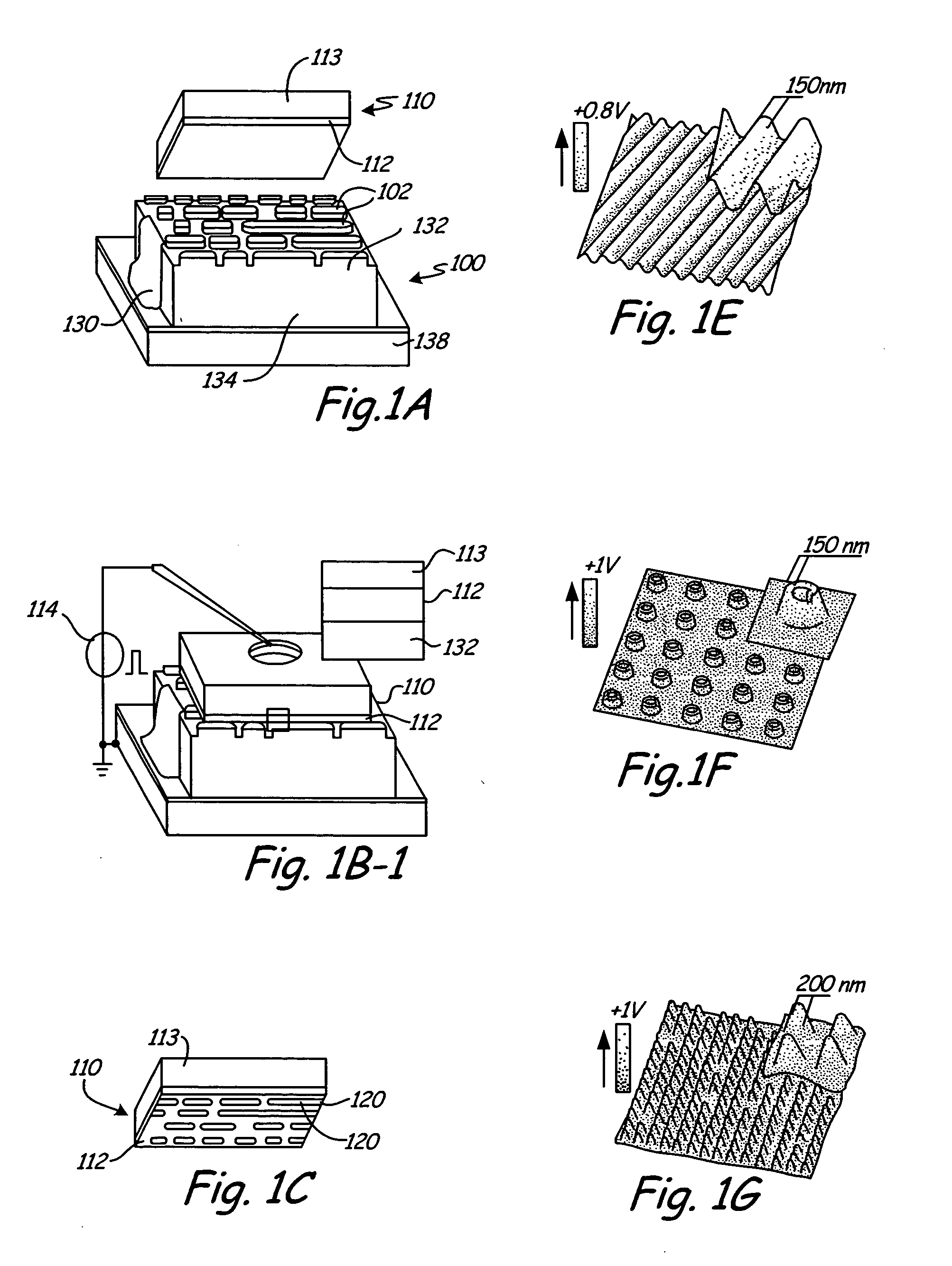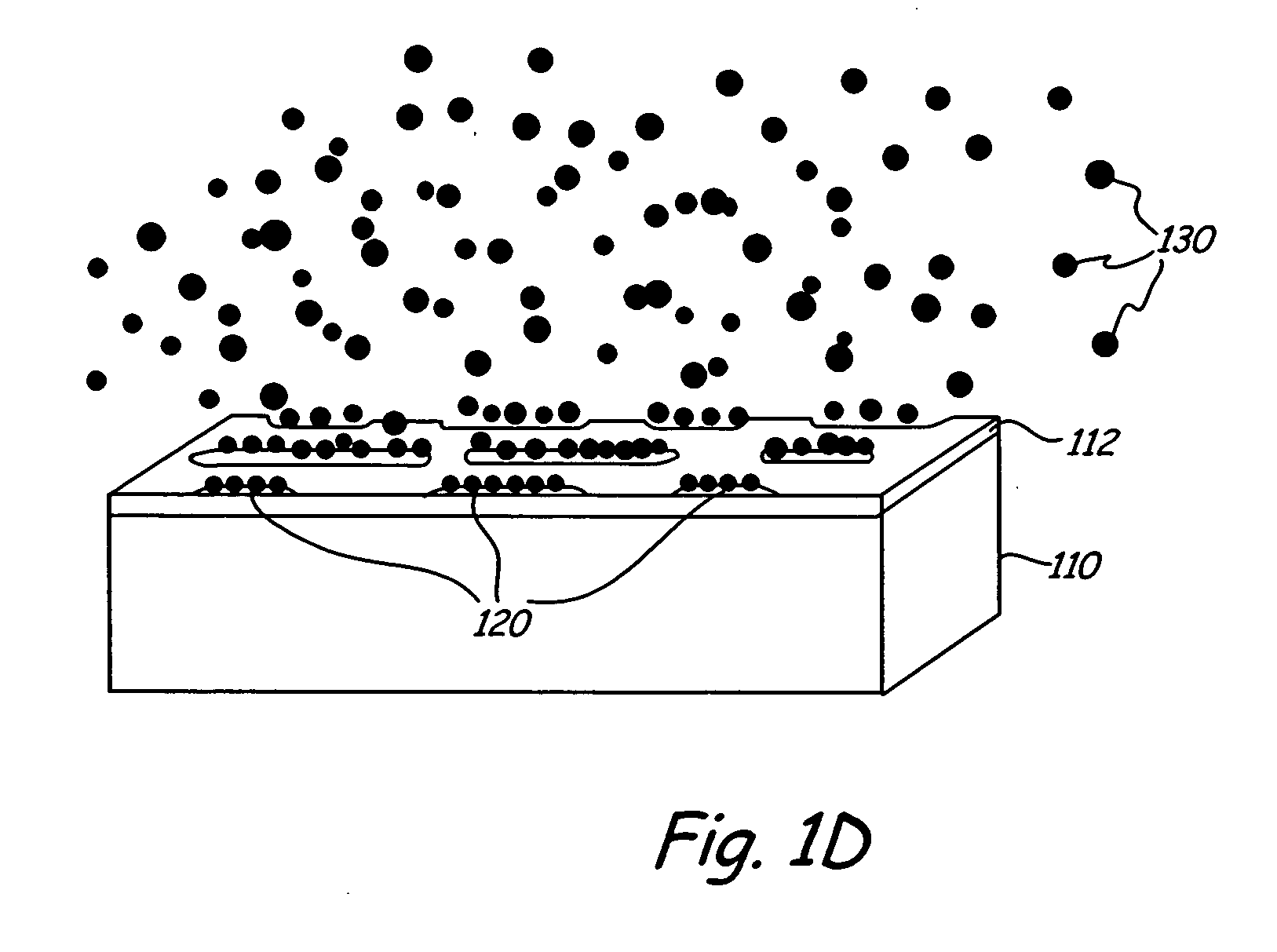Method and apparatus for depositing charge and/or nanoparticles
a charge and/or nanoparticle technology, applied in the field of nanoparticles, can solve the problems of serial techniques, lag in yield and speed, and devices that do not hold the only interest in nanoparticle generation,
- Summary
- Abstract
- Description
- Claims
- Application Information
AI Technical Summary
Benefits of technology
Problems solved by technology
Method used
Image
Examples
Embodiment Construction
[0025] Non-Traditional Parallel Nanofabrication is a fast growing field that uses alternative methods to fabricate and pattern nanostructures at low cost. It is believed that these techniques will become an important part of future micro- and nanofabrication. Most of these techniques use a master to replicate nanostructures in parallel. Current research focuses on microcontact printing, molding, embossing, near-field photolithography topographically directed etching and topographically directed photolithography.
[0026]FIGS. 1A, 1B and 1C illustrate steps of a stamping process in accordance with one aspect of the present invention. A flexible conducting stamp 100 is illustrated which includes surface features 102 formed thereon. FIG. 1B is a perspective view showing stamp 100 positioned in contact with a rigid support substrate 110. Rigid support substrate 110 is covered by a layer of photoresist, electret or other material 112 carried on conductive support 113 and a voltage pulse is...
PUM
 Login to View More
Login to View More Abstract
Description
Claims
Application Information
 Login to View More
Login to View More - R&D
- Intellectual Property
- Life Sciences
- Materials
- Tech Scout
- Unparalleled Data Quality
- Higher Quality Content
- 60% Fewer Hallucinations
Browse by: Latest US Patents, China's latest patents, Technical Efficacy Thesaurus, Application Domain, Technology Topic, Popular Technical Reports.
© 2025 PatSnap. All rights reserved.Legal|Privacy policy|Modern Slavery Act Transparency Statement|Sitemap|About US| Contact US: help@patsnap.com



